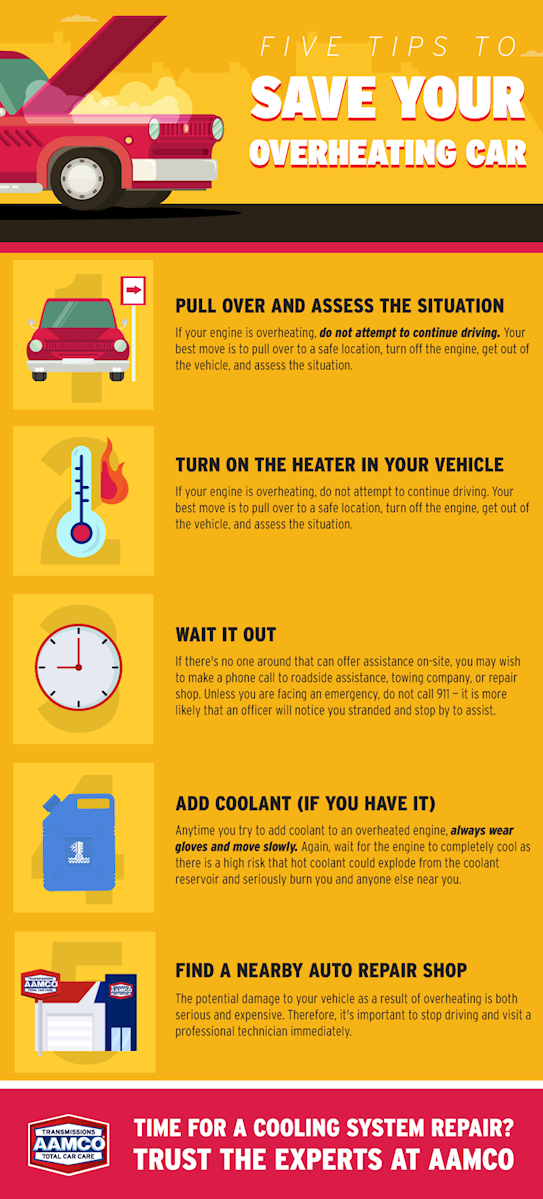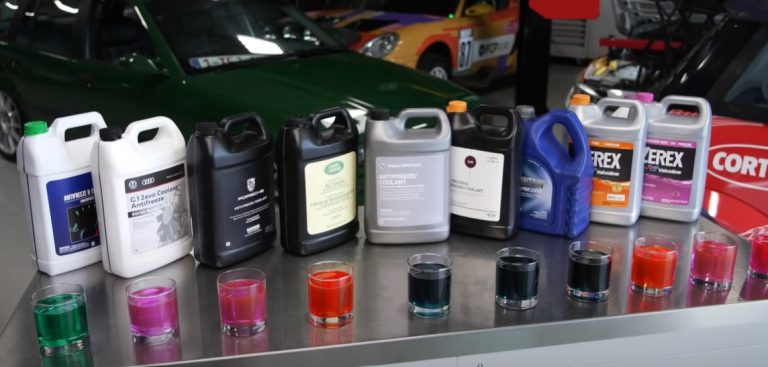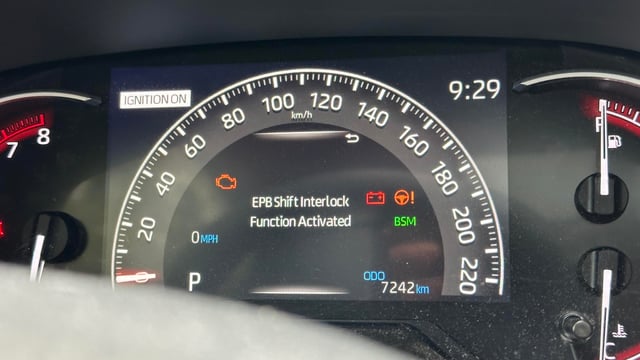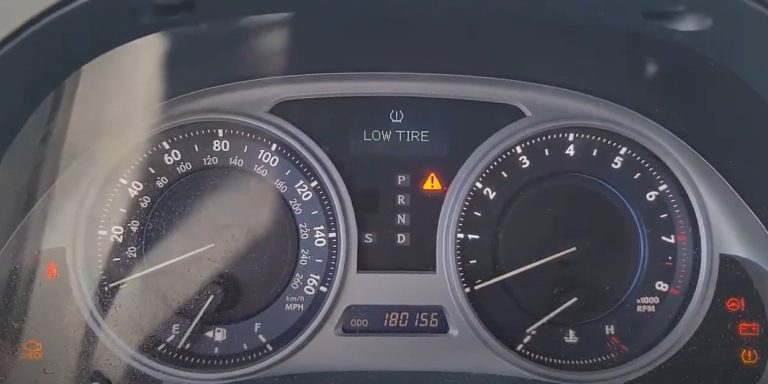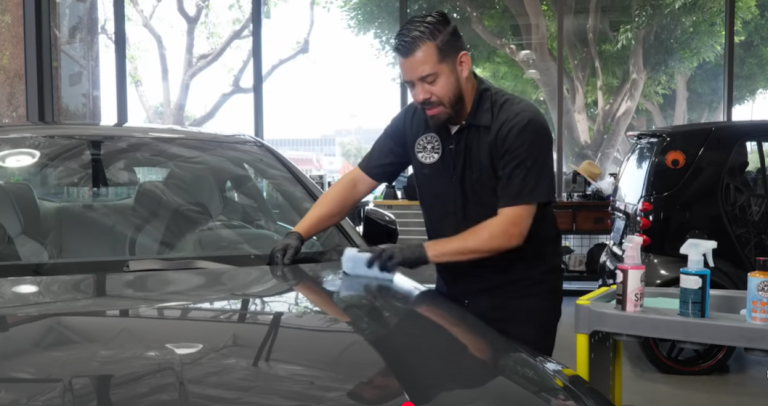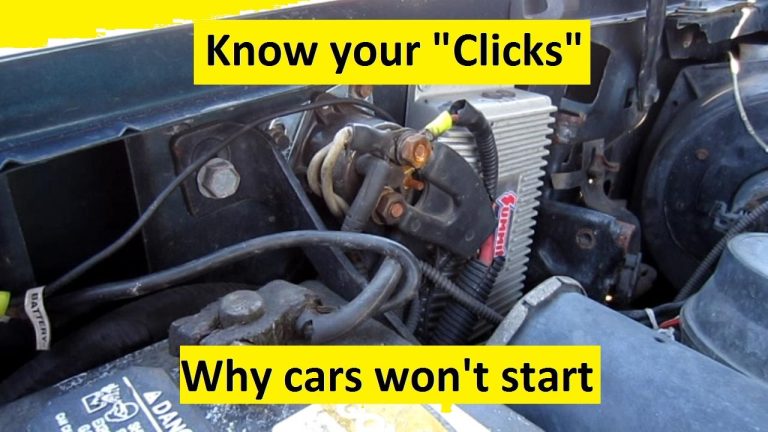Temporary Fix for Overheating Car: Quick Solutions
Turn off the AC and turn on the heater to draw heat from the engine. Pull over safely, turn off the engine, and let it cool. Check coolant levels and add coolant if low. Avoid removing the radiator cap while hot. Drive to a mechanic once the engine cools.
Sound familiar? If you’ve ever been in this situation, you know how stressful it can be. The good news is that there are temporary fixes you can use to cool things down and safely reach your destination. Imagine feeling empowered and prepared the next time your car’s engine starts steaming.
By understanding these quick solutions, you can protect your car from damage and avoid being stranded on the side of the road. Stick with us as we delve into practical, easy-to-follow tips that can make all the difference when you’re in a bind. Your journey to regaining control begins here.

Credit: www.reddit.com
Temporary Fix for Overheating Car
A temporary fix for an overheating car includes turning off the A/C, turning on the heater, adding coolant or water if low, and pulling over to let the engine cool.
Common Causes Of Car Overheating
| Problem | Temporary Fix | Precaution |
|---|---|---|
| Low Coolant Level | Add coolant or water to the reservoir | Only open radiator cap when engine is cool |
| Faulty Radiator Cap | Tighten or temporarily replace with spare cap | Use correct pressure rating if replacing |
| Overworked Engine in Traffic | Turn off A/C and turn on heater | Pull over if temperature continues to rise |
| Coolant Leak | Use radiator sealant as a temporary fix | Have the leak professionally repaired ASAP |
| Broken Cooling Fan | Allow engine to cool and avoid driving in traffic | Get the fan motor or relay checked soon |
| Blocked Radiator | Spray with water to cool externally | Don’t drive long distances until professionally cleaned |
| Stuck Thermostat | Let engine cool and drive minimally | Replace thermostat as soon as possible |
Experiencing an overheating car can be a nerve-wracking moment for any driver. Whether you’re stuck in traffic or cruising on a highway, the sight of steam billowing from your hood is alarming. Understanding the common causes can help you stay ahead of this problem, saving you time and stress. Let’s dive into what might be causing your car to overheat and how you can address these issues.
Low Coolant Levels
Low coolant levels are a frequent culprit behind car overheating. Coolant circulates through your engine, maintaining an optimal temperature. If the coolant is low, it can’t effectively absorb heat. Check your coolant reservoir regularly, especially before long trips. You might be surprised how quickly levels can drop.
Read more: What to Do If Car is Overheating: Urgent Solutions
Faulty Thermostat
The thermostat regulates the flow of coolant based on your engine’s temperature. If it gets stuck, coolant can’t circulate properly. This leads to a rapid increase in engine temperature. Consider replacing your thermostat if you notice irregular temperature readings. It’s a simple fix that could save you from bigger headaches.
Radiator Issues
The radiator plays a crucial role in dissipating heat. If it’s clogged or leaking, your car might overheat quickly. Regularly inspect your radiator for debris or signs of wear. A quick clean or patch might be all you need to keep your engine cool. Have you ever tried cleaning it yourself?
Broken Water Pump
The water pump is essential for moving coolant through the engine. A malfunctioning pump means inadequate coolant flow. Listen for unusual noises coming from the pump area. These could indicate a problem. Replacing a water pump might seem daunting, but it’s a vital step to prevent overheating.
Read more: Car Starting Issues Solved: Expert Tips & Solutions
Fan Malfunction
The cooling fan helps maintain airflow when your car isn’t moving. If it stops working, your car could overheat while idling. Check if the fan activates when your car is stationary. An easy fix can often involve adjusting or replacing a fan relay. How often do you check your fan’s operation?
Recognizing these common causes empowers you to take action before overheating becomes a serious issue. By keeping an eye on these components, you can avoid being stranded on the side of the road. What steps will you take to ensure your car stays cool?
Checking Coolant Levels
Experiencing an overheating car can be stressful. A common cause is low coolant levels. This liquid is essential for keeping your engine cool. Checking coolant levels is an easy fix that can prevent costly repairs.
How To Locate The Coolant Reservoir
Start by popping the hood. Look for a transparent container with markings. This is the coolant reservoir. The markings show the minimum and maximum levels.
Identifying Low Coolant Levels
Check the markings on the reservoir. If the coolant is below the minimum line, it’s too low. This can cause your engine to overheat.
Adding Coolant Safely
Wait for the engine to cool down. Open the reservoir cap carefully. Pour coolant in until it reaches the maximum line. Don’t overfill.
Checking For Coolant Leaks
Low levels might mean a leak. Inspect the ground under your car. Look for puddles or wet spots. A leak could mean a more serious problem.
Monitoring Coolant Levels Regularly
Keep an eye on coolant levels weekly. Consistent checks can prevent overheating. It helps maintain engine health.
Assessing The Radiator Fan
Checking the radiator fan can help temporarily fix an overheating car. Ensure the fan works properly to cool the engine. If it’s not functioning, consider replacing the fuse or checking the fan motor.
When your car starts overheating, the radiator fan is one of the first components you should check. This fan plays a crucial role in regulating the engine’s temperature by drawing air through the radiator. If it fails, your car might overheat, leading to potential damage. Let’s dive into how you can assess your radiator fan effectively.
Understanding The Role Of The Radiator Fan
The radiator fan helps cool down the engine by blowing air through the radiator’s fins. This air cools the coolant that circulates through the engine, preventing overheating. Without a functioning fan, the engine temperature can rise quickly, especially in traffic or hot weather.
Checking For Obstructions
First, make sure nothing is blocking the fan. Leaves, debris, or even small animals can get caught in the fan blades, obstructing their movement. Clear any obstructions to restore the fan’s functionality.
Inspecting The Fan Blades
Take a close look at the fan blades themselves. They should be intact and free from cracks or chips. Damaged blades can reduce the fan’s efficiency and lead to further engine overheating. If you spot any damage, it’s time to replace the fan.
Testing The Fan Motor
You can easily test the fan motor by turning on your car and letting it idle. The fan should kick in when the engine reaches a certain temperature. If it doesn’t, there might be an issue with the motor or the electrical connections.
Examining The Electrical Connections
Ensure all electrical connections to the radiator fan are secure and corrosion-free. Loose or corroded wires can prevent the fan from receiving power. A quick clean and tighten might be all you need to get the fan working again.
Using Personal Experience
Once, I found my car overheating on a road trip. I pulled over, opened the hood, and realized the fan wasn’t spinning. After checking, I discovered a loose wire was the culprit. Tightening it saved my trip and taught me a valuable lesson about regular maintenance.
Asking The Right Questions
Consider asking yourself: When was the last time you checked your radiator fan? Could a simple DIY inspection prevent future overheating issues? Regular checks can save you time, money, and stress on the road. Your car’s radiator fan is essential in keeping the engine cool. Regular checks and maintenance can help avoid unexpected breakdowns. Always keep an eye on your car’s temperature gauge and listen for unusual fan noises.
Inspecting For Leaks
An overheating car can be stressful. One common cause is leaks. Inspecting for leaks can offer a temporary fix. It helps identify issues before they worsen. This inspection involves checking various components. Let’s dive into the process.
Check The Radiator
The radiator is a crucial part of the cooling system. Look for any visible leaks around it. A wet or stained area might indicate a leak. If you spot something, address it promptly. Ensure the radiator cap is secure. It maintains pressure within the system.
Examine The Hoses
Hoses connect different parts of the cooling system. Inspect them for cracks or splits. Feel them for soft spots. This could signal a leak. Tighten any loose clamps. It prevents coolant from escaping. Replace damaged hoses immediately.
Inspect The Water Pump
The water pump circulates coolant throughout the engine. Check it for leaks or corrosion. Leaks here can cause overheating. Listen for unusual noises. A whining sound can mean trouble. If there’s a problem, it needs attention.
Look At The Coolant Reservoir
The coolant reservoir holds excess coolant. It should be full and free of leaks. Check for cracks or damage. Ensure the cap is tight. A loose cap can lead to leaks. Replace it if worn or damaged.
Check The Heater Core
The heater core is less obvious but important. It can leak coolant into the cabin. Inspect the floor mats for wetness. A sweet smell might indicate a leak. Address any issues quickly. This prevents further damage.
By inspecting these components, you can identify leaks. It may temporarily fix the overheating problem. Regular checks help maintain your car’s health.
Temporary Cooling Solutions
Beat the heat with temporary cooling solutions for overheating cars. Coolant leaks can cause your engine to overheat. Adding water or antifreeze can help. Park in the shade to reduce engine temperature.
When your car starts to overheat, it can be a stressful situation. The good news is, there are temporary cooling solutions you can use to get back on the road quickly. These fixes are not permanent, but they can help you manage the situation until you can address the root cause.
Use Your Heater To Help Cool The Engine
Turning on your car’s heater might sound counterproductive, especially on a hot day. However, your heater acts like a second radiator. It pulls heat away from the engine and can help lower the temperature temporarily. Consider this a quick fix to prevent further damage.
Check And Add Coolant
Low coolant levels can often be the culprit behind an overheating engine. Always keep a bottle of coolant in your trunk. If you notice the temperature gauge climbing, safely pull over and check the coolant level. Adding coolant can stabilize the temperature until you reach a mechanic.
Stop And Let The Engine Cool
Sometimes the best solution is to give your car a break. If the temperature gauge is in the red, find a safe place to pull over. Allow your engine to cool down for at least 15 minutes. Use this time to assess any visible issues under the hood.
Check For Coolant Leaks
A coolant leak can be a sneaky cause of overheating. Look for signs of leaks under the car or around the engine bay. If you spot a leak, patching it with a temporary sealant can sometimes buy you time. However, remember to get it properly fixed to avoid recurring problems.
Turn Off Unnecessary Accessories
Running the air conditioner or other electrical accessories can add stress to your engine. When you notice signs of overheating, switch off these extras. This reduces the engine’s workload and can help lower the temperature slightly. Have you ever been caught off guard by an overheating car? It’s a situation that demands quick thinking and action. These temporary solutions can be lifesavers in a pinch, but remember, they’re just that—temporary. Always plan to address the underlying issue sooner rather than later to keep your car running smoothly.

Credit: www.youtube.com

Credit: www.youtube.com
Frequently Asked Questions
How Can I Quickly Cool Down My Overheating Car?
Turn off the AC. Open windows. Blast heater to maximum. This transfers engine heat to the cabin.
Is It Safe To Drive With An Overheating Car?
Driving with an overheating engine can cause serious damage. Stop the car. Let it cool before continuing.
What Causes A Car To Overheat Suddenly?
Low coolant levels. Faulty thermostat. Broken radiator fan. Clogged hoses. Regular checks can prevent sudden overheating.
Conclusion
Keeping your car from overheating is crucial. Temporary fixes can help. Remember to check coolant levels often. Use water if you lack coolant. Turn off the air conditioner. Open windows for airflow. Pull over if the engine gets too hot.
Let it cool before restarting. These steps are not permanent solutions. Visit a mechanic soon. Professional help ensures long-term safety. Regular maintenance prevents future problems. Take care of your car. It will take care of you. Stay safe on the road.

